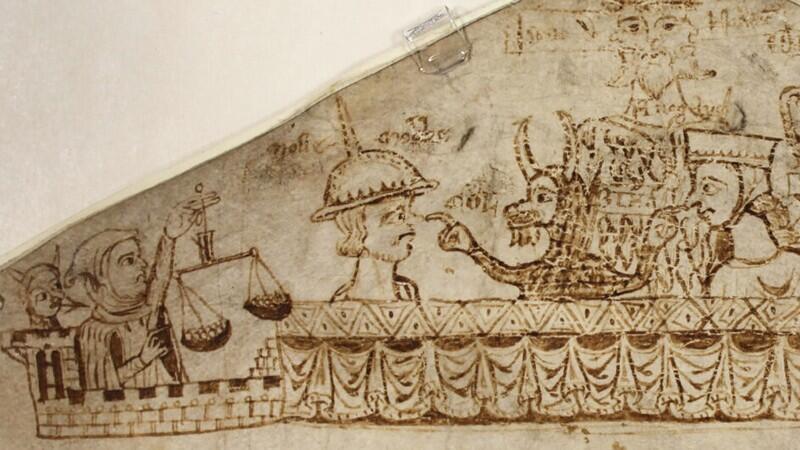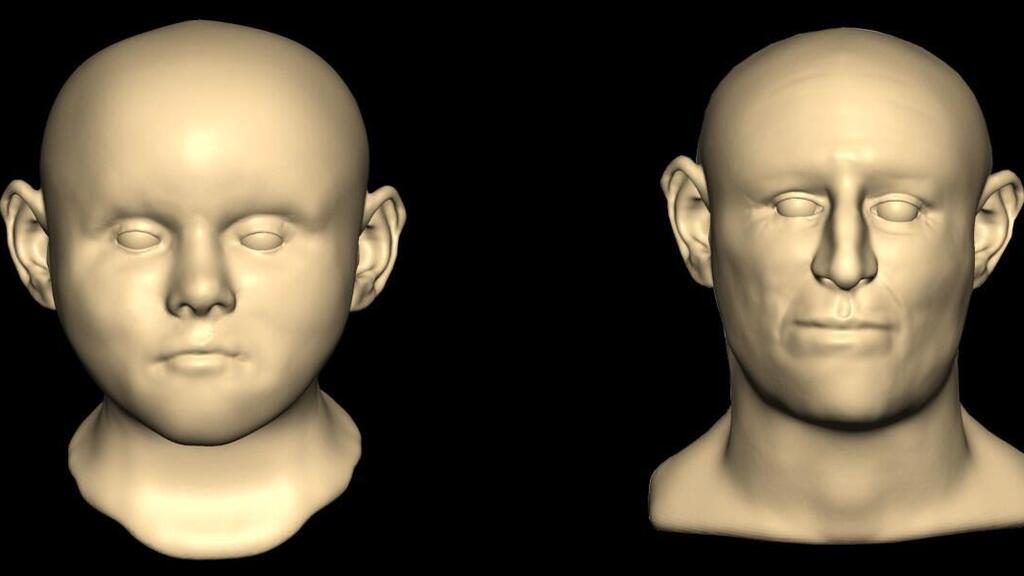Getting your Trinity Audio player ready...
Genomic analysis suggests that human remains recovered from a medieval well in Norwich, England, were probably those of Jews murdered in the twelfth century, according to an study published in Current Biology on Tuesday.
Construction workers excavating land in central Norwich in 2004, as part of the Chapelfield shopping center development, unearthed human skeletal elements from their spoil.
2 View gallery


Anti-Semitic sketch, which was drawn in the margin of an English revenue record and dated to 1233
(Photo: The National Archives )
The analysis identified at least six adults and eleven children.
The burial outside of consecrated ground suggested that they may have been victims of a mass fatality event such as famine, disease, or mass murder.
“We did not know they were likely Jewish until after doing the genetic analyses," says study co-author Mark Thomas, an evolutionary geneticist at University College London. “Nobody had analyzed Jewish ancient DNA before because of prohibitions on the disturbance of Jewish graves," he said.
“Doing the analysis is a part of identifying that they were Jewish, partly so that they could be given appropriate burial in a Jewish cemetery.”
The analysis indicated that the bodies were killed between 1161–1216 CE. This date range is consistent with the only historically attested anti-Semitic massacre in Norwich in 1190 CE. It was also inferred that three individuals were full-sibling sisters- a young adult, a 10-15-year-old. and a 5-10-year-old.
2 View gallery


Reconstruction of the faces of two of the murdered victims
(Photo: Professor Caroline Wilkinson
)
“It was quite surprising that the initially unidentified remains filled the historical gap about when certain Jewish communities first formed, and the origins of some genetic disorders," Thomas said.
The ancient DNA showed that the Norwich victims were predisposed to some genetic conditions, such as primary ciliary dyskinesia, that are prevalent in modern Ashkenazi Jews.
Ian Barnes, an ancient-DNA specialist at the Natural History Museum in London, said the study demonstrates how ancient DNA can help to solve “historical cold cases”.
He has worked to identify the origins of the mass burial for more than 12 years, and has been in touch with the Norwich Jewish community throughout the process.
The community buried the remains in 2013 after an earlier, less conclusive DNA analysis, and the latest study provides more definitive results.
"They were correctly buried in the right graveyard and with the right religious rites,” says Barnes. “It took more than 800 years, but [they] got there in the end.”

